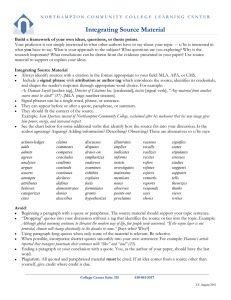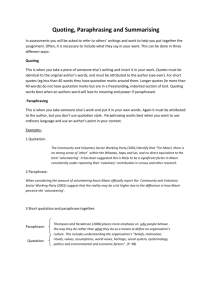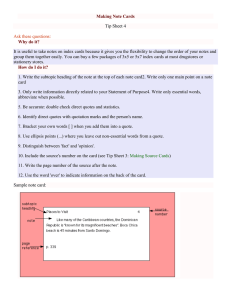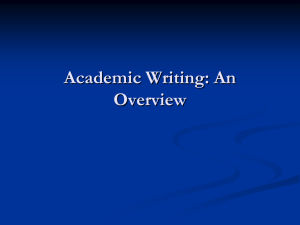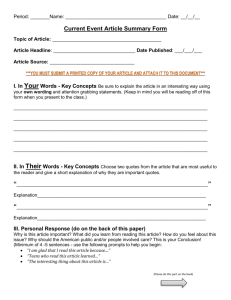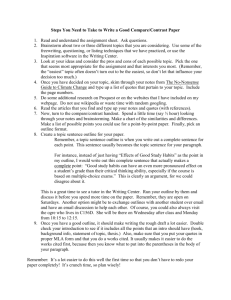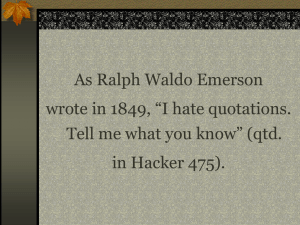Quoting and Paraphrasing without Plagiarizing
advertisement
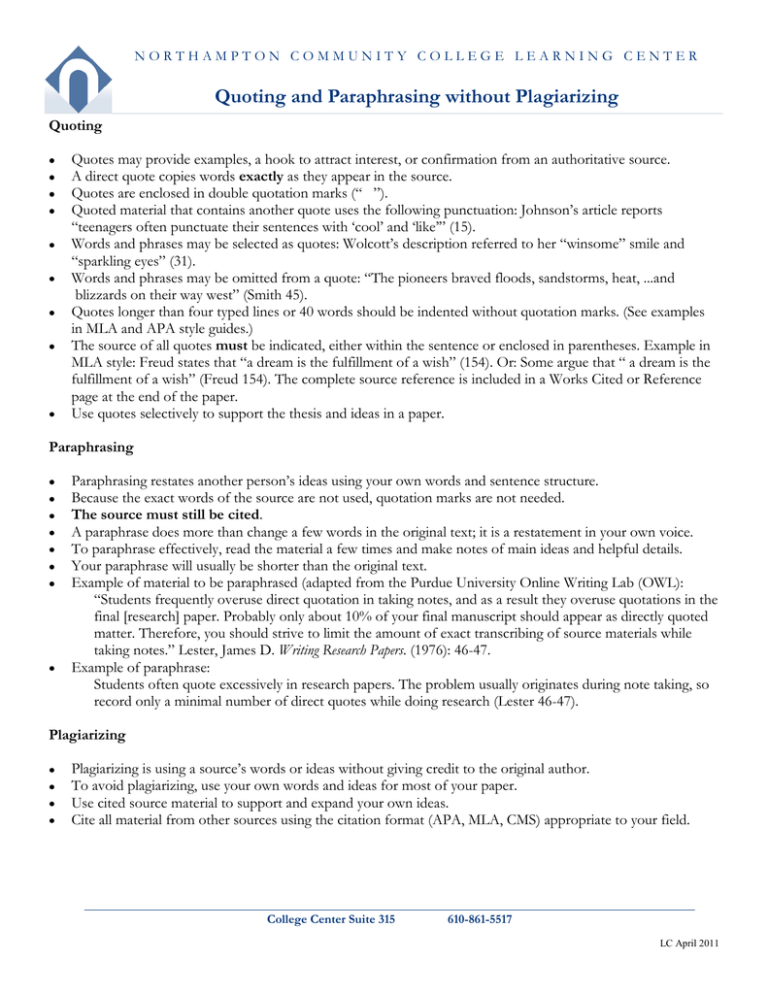
NORTHAMPTON COMMUNITY COLLEGE LEARNING CENTER Quoting and Paraphrasing without Plagiarizing Quoting Quotes may provide examples, a hook to attract interest, or confirmation from an authoritative source. A direct quote copies words exactly as they appear in the source. Quotes are enclosed in double quotation marks (“ ”). Quoted material that contains another quote uses the following punctuation: Johnson‟s article reports “teenagers often punctuate their sentences with „cool‟ and „like‟” (15). Words and phrases may be selected as quotes: Wolcott‟s description referred to her “winsome” smile and “sparkling eyes” (31). Words and phrases may be omitted from a quote: “The pioneers braved floods, sandstorms, heat, ...and blizzards on their way west” (Smith 45). Quotes longer than four typed lines or 40 words should be indented without quotation marks. (See examples in MLA and APA style guides.) The source of all quotes must be indicated, either within the sentence or enclosed in parentheses. Example in MLA style: Freud states that “a dream is the fulfillment of a wish” (154). Or: Some argue that “ a dream is the fulfillment of a wish” (Freud 154). The complete source reference is included in a Works Cited or Reference page at the end of the paper. Use quotes selectively to support the thesis and ideas in a paper. Paraphrasing Paraphrasing restates another person‟s ideas using your own words and sentence structure. Because the exact words of the source are not used, quotation marks are not needed. The source must still be cited. A paraphrase does more than change a few words in the original text; it is a restatement in your own voice. To paraphrase effectively, read the material a few times and make notes of main ideas and helpful details. Your paraphrase will usually be shorter than the original text. Example of material to be paraphrased (adapted from the Purdue University Online Writing Lab (OWL): “Students frequently overuse direct quotation in taking notes, and as a result they overuse quotations in the final [research] paper. Probably only about 10% of your final manuscript should appear as directly quoted matter. Therefore, you should strive to limit the amount of exact transcribing of source materials while taking notes.” Lester, James D. Writing Research Papers. (1976): 46-47. Example of paraphrase: Students often quote excessively in research papers. The problem usually originates during note taking, so record only a minimal number of direct quotes while doing research (Lester 46-47). Plagiarizing Plagiarizing is using a source‟s words or ideas without giving credit to the original author. To avoid plagiarizing, use your own words and ideas for most of your paper. Use cited source material to support and expand your own ideas. Cite all material from other sources using the citation format (APA, MLA, CMS) appropriate to your field. College Center Suite 315 610-861-5517 LC April 2011
